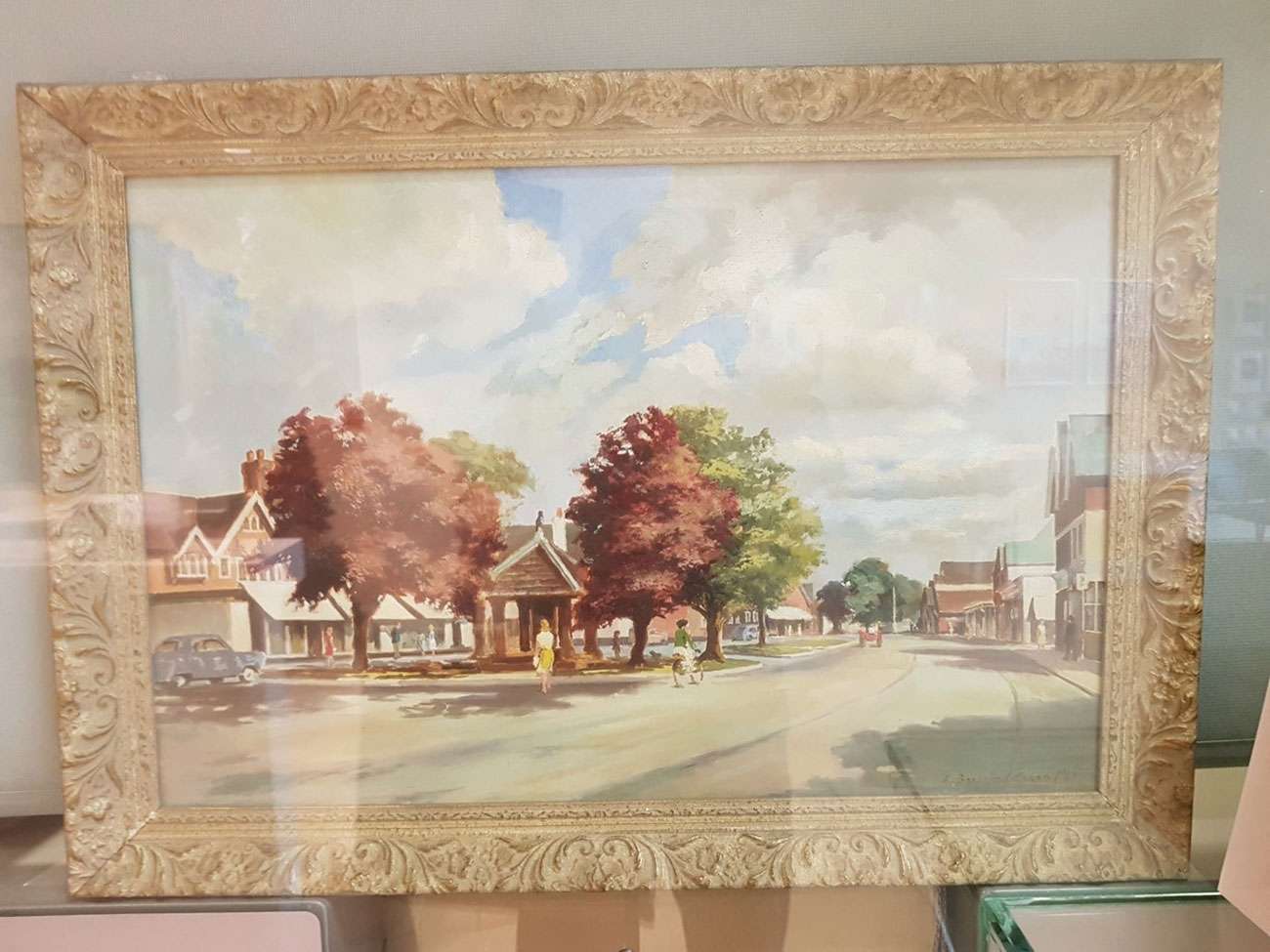
The Coronation Arch of 1911 with Park Gate Cottages and the Windmill in the background (Cranleigh History Society Archives)
As Cranleigh celebrates the Queen’s 70th anniversary – she succeeded her father, George VI, on February 6th 1952, and was crowned on June 2nd 1953 – it is a good time to remember previous royal commemorations and celebrations. Perhaps the oldest royal name in Cranleigh is Jubilee Cottages in Horsham Road, named in honour of Queen Victoria’s 50th anniversary in 1887. She eventually reigned for 63 years, and the name of Victoria Road was given to one of the earliest roads built here, as modern Cranleigh was beginning to develop. (Victoria Road is the most common royal road name in Britain.) Her husband Prince Albert inspired the name of Albert Cottage in Ewhurst Road.

Jubilee Cottages (courtesy of Judy Hill)
In 1897 the drinking fountain on the Common was built as a memorial to Queen Victoria’s diamond jubilee. It was paid for by the boys and alumni (or old boys) of Cranleigh School, and has the royal coat of arms and that of the school carved on it.
The Parish Magazine reported on the celebrations that year: two triumphal arches were erected in the village, one ‘close to the top pond on the Common’ and the other in the main street ‘opposite to Mr Holden’s yard’ (where M&S Simply Food is now). ‘A bonfire on Pitch Hill, consisting of 5,000 bundles of faggots, was lit punctually at 10 pm by Master Edward Napper [the son of the village doctor, he was in fact aged 18]’, while the crowd sang the National Anthem. From the top of Pitch Hill, 85 other bonfires were visible. At the same time, Mr Henry Grinstead set fire to a tar barrel on Cranleigh Common. Sounds a lot of fun! Sir Henry Doulton of the famous pottery firm, who lived in what has now become the Duke of Kent School in Ewhurst, gave ‘beautiful Jubilee mugs’ for all the children in the National School.

The 1911 Coronation decorations at Collins, the butchers
When Queen Victoria died at Osborne House in the Isle of Wight in 1901, the Parish Magazine declared, ‘we deeply lament the death of our aged Queen … [it has been] a privilege to have lived under her rule’.
Queen Victoria was succeeded by her son Edward VII. Cranleigh’s Kings Road may be named after him. He died in 1910, and his son, George V, was crowned the next year. Kings Road had four occupied houses at the time of the 1911 Census, so it is difficult to tell which king was being remembered. Cranleigh celebrated George V’s coronation with another impressive arch at the western entrance to the village.

Coronation Oak (1911), painted by L. Beresford Jones in 1959 (courtesy of Barclay’s Bank)
In the village, the ‘Coronation Oak’ was planted at the head of Knowle Lane. It was well established when it was cut down around 1970 to provide a space by the bus stop for the bus to pull in. Until it closed earlier this year, Barclay’s Bank used to display a 1959 painting of the Coronation Oak.
The weather on Coronation Day, 22 June 1911, was ‘pretty disagreeable’, according to the Parish Magazine. A united service was held at the Baptist Chapel, and ‘the combined choirs of the two churches, augmented by members of the Choral Society, gave a most creditable rendering of Handel’s “Zadok the Priest”, accompanied by the Cranley Brass and Reed Band’. In the afternoon, there was a procession to Knowle. ‘No better leader for a procession of this kind could be found in all the countryside than Dr Napper on his horse. He looked the part and played it well.’ The rain spoilt both the sports and also a planned torchlight procession to Pitch Hill, but there was a huge tea for 1,800 people.

Coronation play in the Village Hall in 1953 (Nigel Nicolson papers)
The silver jubilee of George V in 1935 was another occasion for celebration, followed two years later by the coronation of George VI. However, the local programme for marking the coronation of Queen Elizabeth II was on an unprecedented scale. Prizes were awarded for the best decorated business premises and also for houses, in separate classes for displays by day and night; special Coronation gardens were created outside the Village Hall and at the Fountain; the Coronation in London was shown on television in the Village Hall (an exciting novelty then); a Cranleigh fair with sideshows was held on the Common and a Grand Carnival Procession went around the Village; square dancing in the evening on the Common was followed by Modern and Old Time dancing to the Merrymakers Band (tickets 1/-) until 2.00am; and a torchlight procession walked from Pitch Hill to light the bonfire on the Common. It was like the Cranleigh Carnival and Bonfire Night combined! The next day, a cinema performance was given ‘for all Cranleigh folk presenting their Old Age Pension books at the doors of the Regal Cinema’ and a tea ‘for approximately 1,000 school children’ took place in the Village Hall.

The display in David Mann & Sons store for George V’s Silver Jubilee in 1935
We wonder: will another coronation ever demonstrate such enthusiasm and loyalty?
The Cranleigh History Society meets on the second Thursday of each month at 8.00pm in the Band Room. The next meeting will be on Thursday June 9th, when Jody Cooksley will speak on ‘Julia Margaret Cameron: pioneer photographer’.











